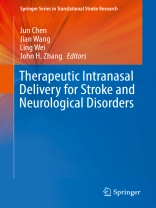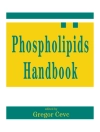The blood-brain-barrier serves to encapsulate and protect the central nervous system, but it also presents a major barricade to therapeutic drug delivery. Poor penetration is the most common hurdle to translating a promising experimental therapy that uses invasive delivery methods to a clinically useful application. In the last 10 years, intranasal delivery of various therapeutic compounds including small chemicals, large proteins, and even stem cells has proven to be very effective in bypassing the blood-brain-barrier and has led to some important advances in translational research for stroke and other neurological diseases. The proposed book will bring together reports from various labs around the world who have had successes in pre-clinical studies of intranasal therapies for various diseases including adult and perinatal stroke, Alzheimer’s, Parkinson’s, and others.
قائمة المحتويات
Preface.- Transnasal Induction of Therapeutic Hypothermia for Neuroprotection.- Hypoxia-Primed Stem Cell Transplantation in Stroke.- Therapeutic potential of intranasal drug delivery in preclinical studies of ischemic stroke and intracerebral hemorrhage.- Intranasal Drug Delivery after Intracerebral Hemorrhage.- Intranasal Treatment in Subarachnoid Hemorrhage.- Intranasal Delivery of Therapeutic Peptides for Treatment of Ischemic Brain Injury.- Intranasal delivering method in the treatment of ischemic stroke.- Intranasal Delivery of Drugs for Ischemic Stroke Treatment: Targeting IL-17A.- Intranasal t PA application for axonal remodeling in rodent stroke and traumatic brain injury models.- Therapeutic Intranasal Delivery for Alzheimer’s disease.- Combination therapy of intranasal IGF-1 and hypothermia.- Intranasal Medication Delivery in Children for Brain Disorders.- Index.












